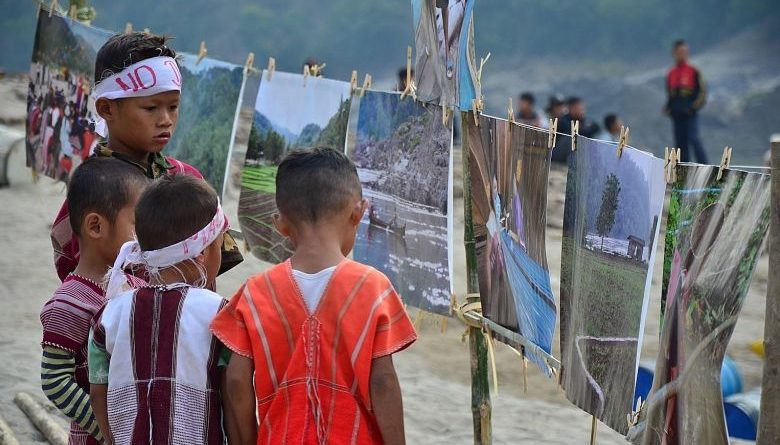SOCIETY: YANGON – Work on Myanmar dam goes on under heavy guard
Work on a massive hydropower dam appears to be picking up in eastern Myanmar as the electricity-starved nation seeks ways to light more homes amid protests from locals and environmentalists.
Locals say employees of a Chinese state-owned power firm in Shan state have been working under heavy guard at the Mong Ton Hydropower project along the Salween river. The Mong Ton dam is backed by a consortium, including the China Three Gorges Corporation and a subsidiary of the Electricity Generating Authority of Thailand.
In its original form, the dam would have been the tallest in the country and created a reservoir larger than Singapore. But its design was reportedly modified to reduce local impact.
Typically, large dams displace thousands of villagers, still rivers and block the flow of nutrient-rich silt downstream.
Over the past decade since its inception, the project has run up against intense local and international opposition, not least because it threatens to inundate pristine wetlands featuring hundreds of islets, and escalate the conflict between the Myanmar military and ethnic armed groups active in that area.
Myanmar’s Ministry of Electricity and Energy did not respond to queries from The Straits Times. But the Mong Pan Youth Association, which recently conducted interviews with villagers near the Mong Ton project, told The Straits Times that movement in the vicinity is now heavily restricted by security forces.
Its director, Mr Nang Shining, said: “One way or other, people will be impacted by the dam, whether it’s through increased security measures or environmental impact.”
-
27 Number of power stations from which Myanmar’s electricity is mostly drawn.
-
15% Rate at which Myanmar’s electricity consumption is growing every year.
-
3,000 Myanmar’s power production in megawatts, set to be doubled after government approval for private investment in four gas-fired plants.
A Burmese-language BBC report early last month quoted a resident as saying that a militia member was shot dead while on a boat on the Salween.
The river, called the Thanlwin in Myanmar and the Nu river in China, originates in the Tibetan plateau and then drains into the Andaman Sea via Myanmar and Thailand.
Several sites along the major waterway have been earmarked for hydropower dams. Besides southern Shan state, where the Mong Ton project is located, other sites include Kunlong, Manntaung and Nong Pha in Shan state, Ywathit in Kayah state, and Hat Gyi in Kayin state.
Off the Salween, but also in Shan state, dams in the area of the Myitnge and Shweli rivers are already under construction to meet the country’s increasing demand for electricity.
Appliance-sapping brownouts are common in Myanmar, where some two-thirds of the population are not connected to the power grid.
With electricity consumption growing at 15 per cent every year, the government in January gave the green light for private investment in four gas-fired plants, which will double the country’s power production of some 3,000MW. Solar powered mini-grids are also in the works.
Most of Myanmar’s electricity is currently drawn from 27 hydropower stations.
The previous military government was blamed for allowing hydropower projects that exported electricity to neighbouring countries like China and Thailand rather than directing power inward.
In 2011, then President Thein Sein, heeding protests, suspended work on the China-backed Myitsone dam on the Irrawaddy river in Kachin state. The fate of the dam is still unclear despite talks between Naypyitaw and Beijing.
Myanmar’s Electricity and Energy Minister U Win Khaing told Reuters last year that mega hydropower projects were not a priority of his administration, compared with liquefied natural gas and small-scale hydropower projects. “Up to 2025, we don’t put (large dams) in our plan. They have to be considered later on,” he said.
Yet locals in Mong Ton remain wary, given how little information officials have disclosed about their plans for the dam.
While they are touted by Naypyitaw as signs of progress, large infrastructure projects like these are held up by local activists as evidence that the government is trying to centralise control of resources, even as peace talks with ethnic minority armed groups are ostensibly aimed at creating a federal union.
In conflict zones, ethnic armed groups allege that the projects are pretexts for militarisation.
Mr Sai Thum Ai, a Shan-based activist in Burma Rivers Network, told The Straits Times: “The resources are managed by the central government and only a little power is given to the state. It’s not fair. Even if we have federal democracy, the states would have nothing.”










